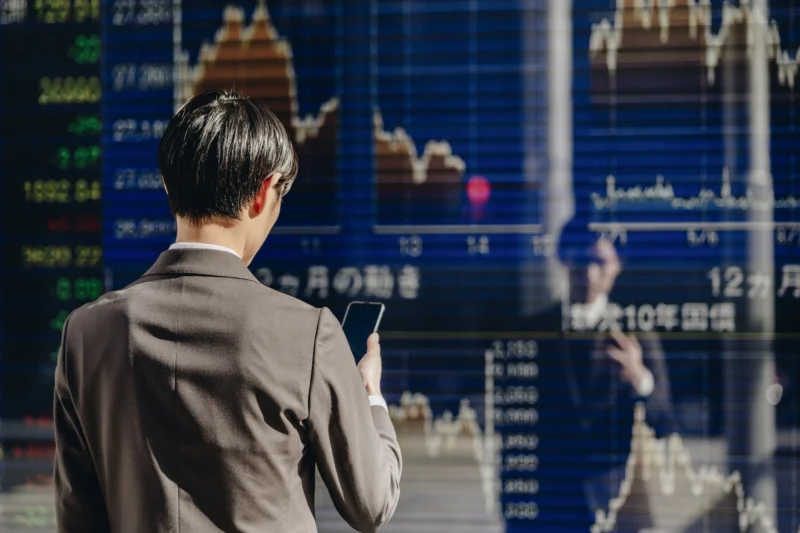Publisher: Maaal International Media Company
License: 465734
CNBC: Tariff exemption saves US tech giants from economic disaster
اقرأ المزيد
CNBC reported that the Trump administration’s decision to exempt smartphones, computers, and other electronic devices from tariffs imposed on China is a major victory for tech companies, most notably Apple, which manufactures most of its products in China.
The channel quoted experts as saying that implementing these tariffs could have been a real disaster for major tech companies and threatened global supply chains related to the microelectronics industry.
Smartphones and computers are among the many tech devices and components exempted from tariffs, according to new directives issued by US Customs and Border Protection.
This move comes after President Trump imposed 145 percent tariffs on products from China earlier this month, as part of a new escalation of the trade war between the two countries. The directives also included broad exemptions for other electronic devices and components, including semiconductors, solar cells, flat-panel TVs, flash drives, and memory cards.
CNBC quoted Dan Ives, global head of technology research at Wedbush Securities, as saying that the decision is an ideal scenario for technology investors, noting that the exclusion of smartphones and microchips from the tariffs represents a major turning point when discussing tariffs on China.
Ives added that the tariffs were a source of concern and concern for the sector from the beginning, because no other sector would have been more affected than the big tech sector. He emphasized that the CEOs in this sector spoke out loudly in the end, prompting the White House to listen and understand the seriousness of the situation, which could have developed into a real economic disaster had the tariff decision been implemented without exemptions. The American channel indicated that in the days following Trump’s announcement of the tariffs, Apple lost more than $640 billion in market value. According to some estimates, the price of an iPhone was expected to rise to $3,500 under Trump’s tariff plan, which would have significantly weakened demand.
The Wall Street Journal explained that iPhones contain a variety of sophisticated parts sourced from numerous countries and assembled primarily in China, which has developed its electronics manufacturing sector over the course of a generation. The newspaper added that the United States does not have manufacturing facilities comparable to its Chinese counterparts, nor does it have the skilled workforce to assemble complex devices like the iPhone at such a large and efficient scale.
The newspaper quoted Gary Gereffi, a professor emeritus at Duke University who specializes in global manufacturing studies, as saying that the iPhone contains parts from more than 40 different countries, with the most complex components including parts from about six countries. Gerevy also emphasized that many of these parts are manufactured in or near China, including Taiwan, South Korea, and Japan, giving China the advantage of geographic proximity to advanced technology centers.
He noted that the only realistic way to move iPhone assembly to the United States is to restructure the entire global supply chain, shifting some key component manufacturing to the broader North American region, including Mexico, Canada, and possibly some Western European countries. He added that even if US assembly begins in the next three to five years, the process will still rely on components sourced from Asia, due to the device’s complexity and the complexity of supply chains.
The newspaper reported that Apple’s earlier attempt to manufacture the Mac Pro in the United States faced significant difficulties from the outset, most notably the lack of sufficient quantities of some key components, such as screws, from local suppliers. Gerevy also explained that it’s not just a matter of financing, but also the ability to build significant production “scale and quality.” He estimated that preparing a large-scale US manufacturing project could require three to five years of continuous work. The newspaper continued, quoting Tinglong Dai, a professor of business administration at Johns Hopkins University, saying that purchasing manufacturing equipment is not impossible, but providing enough personnel to operate it is a real challenge. Dai said, “We are suffering from a severe labor shortage, and we have lost the art of mass manufacturing.” The newspaper also referred to previous statements made by Apple CEO Tim Cook in a 2017 interview with Fortune magazine, in which he emphasized that manufacturing in China is not only due to low wages, but also to the availability of highly advanced manufacturing tools and equipment. Cook added, “The products we make require highly advanced tools and manufacturing,” noting that in the United States, “you can have a meeting of tooling engineers, and I’m not sure we could fill a single room. In China, you could fill several football fields with just tooling engineers.” Dai explained to the Wall Street Journal that robots can assist in packaging and testing, but that delicate tasks like connecting cables, adding glue, and tightening small screws still require direct human intervention.









